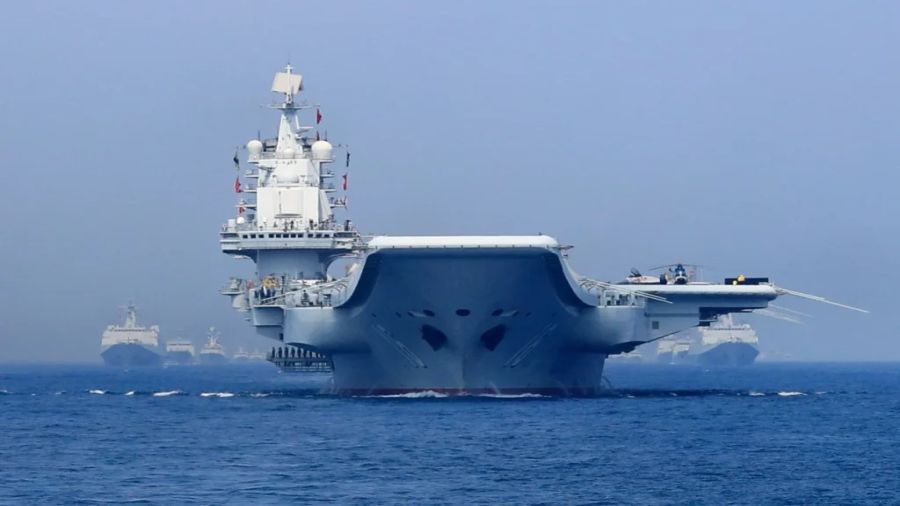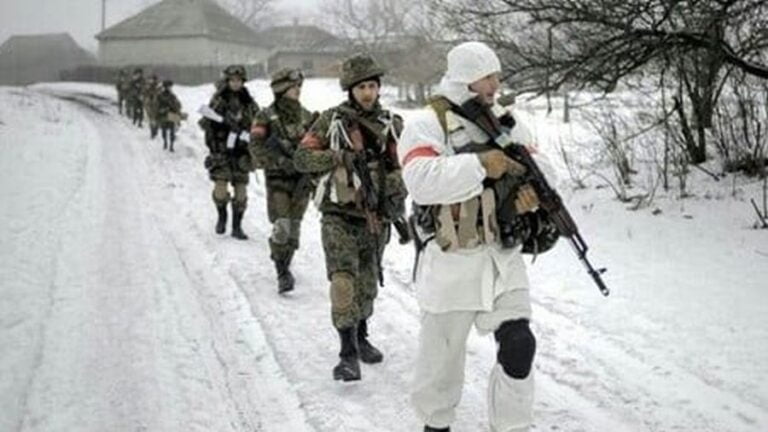Battle for Taiwan (II)
Semi-partisan warfare in an urban environment
The U.S. military is paying special attention to so-called urban warfare, as China has its own synonym for it – Chengshi Zozozhan (城市作战). This method is also referred to by Chinese military leaders as nothing other than “beating mice in a china store” (瓷器店里打老鼠), that is, performing something that is very difficult that could have serious consequences, so one must be very careful.
Having carefully studied the relevant PLA doctrinal texts on urban warfare, American experts have concluded that there are certain hierarchical meanings that tie into a systemic understanding of urban warfare. The experience of the U.S. armed forces in Iraq and Syria was studied.
As a response to urban warfare in China, the U.S. proposes rethinking the degree to which the island’s military and civilian population are prepared for national defense. They put forward the so-called Conformal military design, a concept of integrating the functionality of sensors and weapons into the natural contours of warships and aircraft, which could be extended to urban landscape design.
The experience of U.S. anti-terrorist units, which are stationed around the Capitol in Washington, could be used for this purpose.
Another suggestion is to use conventional munitions and commercial technology. As coalition forces in Iraq from 2004 to 2011 demonstrated, conventional military munitions dispersed in the early days of the conflict, combined with modern retail electronics and ingenuity, helped the Iraqi resistance mount a deadly and effective campaign against the United States and its allies. Improvised explosive devices were used to attack coalition vehicles and stage ambushes. Accordingly, motorcycle and scooter repair shops on the streets of Taipei could quickly be repurposed for military use.
It is likely that the U.S. is already training instructors in Taiwan to conduct insurgency operations. At least such methods are consistent with the Special Warfare of the U.S. Special Operations Forces. And Taiwan is part of the Indo-Pacific area of responsibility of U.S. Special Operations Command (SOCPAC).
Also, U.S. military experts recommend proper reconnaissance to identify units that could potentially be used to take over China. Particular attention should be paid to landing groups and whether they include special forces for urban warfare. This will help predict whether operations on the island will be protracted, preventing a quick recognition of PRC sovereignty over Taiwan.
The U.S. also keeps a close eye on China’s mobilization and logistical capabilities, believing them to be quite effective. In this regard, the Taiwanese military is advised to promote several countermeasures at once. First, it is to improve the ability to transition from peacetime to wartime operations. Second, it is strengthening intelligence gathering and analysis capabilities, thereby expanding the time gap for early warning by obtaining vital information on PLA material and transport mobilization. Third is the integration of long-range precision-guided strike weapon systems to enhance Taiwan’s “unified suppression warfare” (lianhe zhia zuojian, 联合制压作战) capabilities, based on the overall defense concept.
These strike systems should be combined with cyber and information warfare to launch attacks on PLA logistical mobilization nodes to disrupt its battle rhythm and seize strategic space and time. These measures could exploit existing deficiencies in PLA logistical support and mobilization. The Americans believe that if the PLA wants a quick victory in the invasion of Taiwan, it must rely on the smooth operation of its logistical support and mobilization plan. Consequently, it will be critical for the Taiwanese military to sabotage the PLA’s logistics and mobilization systems at the start of the war. Or perhaps in the preparation phase, which would include sabotage of Chinese territory and cyber attacks.
General concept of defense
In 2017, then-Taiwan’s chief of general staff, Admiral Li Ximin, proposed a new approach to Taiwan’s defense, called the Common Defense Concept.
It is essentially an asymmetric strategy that uses mobility, camouflage, swarming tactics, and innovative approaches to complicate the PLA’s ability to find and destroy Taiwanese platforms (targets), especially in the early stages of the conflict. Like all such concepts, it is based on maximizing the advantage of defense and aims to defeat the enemy at the moment of vulnerability, namely, when it is in the coastal zone. Thus, the first phase of military action under the General Defense Concept consists of maintaining one’s own armed forces during the PLA’s initial attack on the island and its blockade. Taiwan’s armed forces must represent a large number of small mobile units that can leave bases, conceal their positions and make it difficult for them to be detected. Then there comes the decisive battle in the coastal zone, which stretches for a hundred kilometers. The key elements for it are minefields and anti-ship cruise missiles. Underwater drones, aircraft or ships can be used to create minefields around the island. U.S. military experts call this part of the “porcupine strategy”. Taiwan has already asked the United States for air-delivered Quickstrike MK-64 sea mines to resupply it and enable rapid deployment at the start of a conflict. Taiwan also has World War II-era MK-6 mines that it bought from the United States and periodically tests their reliability. Also, the Chung Shan National Defense Company has been producing mines since 2002.
As for missiles, Taiwan currently has truck-mounted Hsiung Feng anti-ship missiles that can be hidden in a secluded place to avoid initial strikes and then attack them when PLA ships start crossing the Strait. In order to avoid retaliatory strikes, they must immediately change location.
The third phase of the General Defense Concept aims to destroy the enemy in the “beach zone”, which extends about 40 kilometers from the proposed landing sites. In this phase, Taiwan’s navy must lay mines both in deep water and in shallow water near possible landing zones. A new fleet of automated high-speed mine-laying ships is already under construction for this mission, with the first vessel of this class launched in August 2020. Mine-dumping guides could be installed on several classes of surface ships. It is also known that they will be included in the design of corvettes that are expected to enter the Taiwanese Army. Because of the minefields, the first invasion ships will be forced to slow down and then swarms of small fast attack boats and anti-ship cruise missiles launched from trucks will strike them. In particular, it is important to hit key PLA ships, especially amphibious assault ships carrying manpower (marines) and rapid reaction ships carrying vehicles and armored vehicles.
To succeed in this campaign, Taiwan must have a significant ammunition stockpile, as relying on supplies from allies during the conflict will be difficult because of the possible PLA blockade of the island. It is also necessary to have a sufficient number of personnel. This is probably the reason why Taiwan decided late last year to increase the period of compulsory military service to one year. The military service will be compulsory since January 1, 2024.
At the moment, the main unresolved problem for implementing this model is Taiwan’s stagnant defense budget, which is unable to maintain sufficient investment in both asymmetric coastal defense and conventional long-range strike capabilities.
Ukrainian experience and broader approaches
U.S. experts also note the role of UAVs in the conflict in Ukraine, suggesting that such assets would be heavily used in a potential war in Taiwan. They believe that a combination of Air Force capabilities is needed, where crewed aircraft and drones will be used that can reach the range of Chinese weapon systems to destroy them quickly. Only unlike those used in Ukraine, U.S. Air Force UAVs will need greater range, survivability, autonomy, and sophisticated sensors and payloads to use real coercive leverage.
This requires balancing the creation of a large number of low-cost drones with the strategic and operational requirements facing the U.S. Air Force in the Indo-Pacific region.
Finally, there is a general understanding in the U.S. that China will use a combined strategy with respect to Taiwan, which falls under the gray zone concept. Therefore, opposition to Beijing cannot be conducted exclusively by political or military means.
In this regard, experts of the American Enterprise Institute suggest that the U.S. take advantage of China’s vulnerabilities in four areas.
Economic: sharp reduction of U.S. dependence on China and the search for alternative markets;
Diplomatic: countering China’s enforcement actions by strengthening alliances;
Military: stabilizing the military balance in Asia through investment in critical defense capabilities. To undermine China’s efforts to pressure the Taiwanese government and deter the Chinese Communist Party from attacking Taiwan;
Democratic: countering the erosion of human rights by China with the help of friends in Qingjiang, Tibet, Hong Kong and elsewhere.
Here we see a new development of the “Air-Sea Battle” strategy. Therefore, it is necessary to keep an eye not only on Taiwan’s military-industrial complex, U.S. arms deliveries and Taipei’s ongoing reforms, but also on other dimensions that can be used to apply hybrid warfare tools against China.







